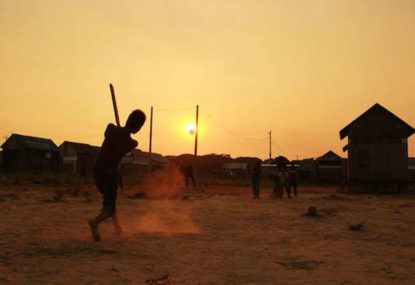WATCH: IPL ground staff member steals the show with an epic one-hander over the rope
Sign the man up for a contract next season!

Cricket Australia announced this week a raft of new rules designed to increase club participation.
The changes, which will be trialled by a couple of organisations, will see teams and pitches reduced in an attempt to make the intimidating world of junior club cricket more hospitable for newcomers.
More on those new rule changes here.
First, an anecdote. I stopped playing cricket for my junior club at the Under 13s level. I was forced into retirement before the next season, when my club cut my team due to poor numbers, saying that if I wanted to play, I would have to move clubs or play up a year.
In that last year, I played with a 156g leather ball on a full-length synthetic pitch, where the boundary was over 40 metres long. My team managed to field a full XI, although at the end of the season enthusiasm among team members began to fade.
Was it difficult? Yes. I was a medium pacer who couldn’t bat at all (basically a 12-year-old Gurinder Sandhu), and while I was relatively successful with my bowling, whenever I batted the same thing would happen.
The bowler would chuck a few down my leg side until he realised I was a lefty and then crack, the castle would be destroyed and I’d be making the long walk off the field. But did that discourage me? No.
I knew that cricket was a hard game and treated it accordingly. I took my victories when I got them and accepted my losses. I learnt the lessons of cricket, that a great ball could be beaten by a greater shot, that the way you played was much more important than the result.
That said, I had been playing for four seasons and was a certifiable cricket tragic. Had I been a newcomer to the game, I would have had a less enjoyable experience.
One of my school friends joined the team that year. He was interested, but not necessarily obsessed with cricket and to be honest was probably forced into that sport by his dad. Compared to the other members of my team, who had been playing at the club for the last few years, his skills was fairly ordinary.
His bowling action was rudimentary, his batting was uncoordinated and he took over my position in the field at fine leg. To be forced to play through a season against kids whose parents were investing in coaching clinics and bowling machines didn’t do much for him. I don’t believe he played another season of cricket.
So I understand why Cricket Australia have decided to bring in these new rules, which appear to be an attempt to make cricket accessible from any age.
However, they don’t appear to be thought out.
Imagine facing a 13-year-old bowler who has hit his growth spurt and is throwing down deliveries at speeds Mitchell Starc would be impressed with. Imagine doing that on a full wicket. Pretty scary.
Now what if you had to face that, but now standing a full two metres closer to the bowler? That might not quite work out.
The only changes I do welcome is a T20 league, which I am in favour of. Had I had the option to play 20 over games over one day as opposed to 60 over games over two, I would have jumped at it and chances are I might have played cricket for a couple more years.
My other concern is that by catering to the new crowd as opposed to the experienced players, Cricket Australia might be throwing the baby out with the bathwater.
While we lost many players to rival sports and lack of interest, we lost the best ones to private schools. Many a good player would leave when the private school season started.
These rule changes to make cricket ‘easier’ are not going to counter this trend. Talented players are not going to stick around waiting for their club level peers to catch up, and those who do are going to fall behind the students from the private schools.
This could create a two-tier system, where the best players, the ones who go on to represent their state and country, are those who went into the private school system, as opposed to those who were held back by the rules in club cricket.
That said, these proposals are set to be trialled with a couple of organisations. There will be much tweaking, and Cricket Australia haven’t said so far that all leagues will adhere to these rules just yet.
There is some likelihood that there will still be an option for talented players (and cricket sadists like me) to play with a full pitch, a hard ball and a proper XI.
To use a video game analogy (because apparently that’s what all the kids are playing these days), junior cricket would work with an easy and a hard level for all age groups.
An easy level with relaxed rules, and a hard level to act as a proving grounds for young talent.
Cricket Australia needs to be careful with making changes to grassroots junior cricket.
We are very lucky that Cricket has a strong profile in Australia, especially compared to the likes of South Africa and England.
The Big Bash League managed to bring back the young fans we lost in the barren years of the 2010s and we don’t want to upset the delicate balance between development of skills and catering to new players.
Cricket is still a game which lives and dies on the performance of the players at the top, and we can’t afford to lose future Australian greats in their teens.